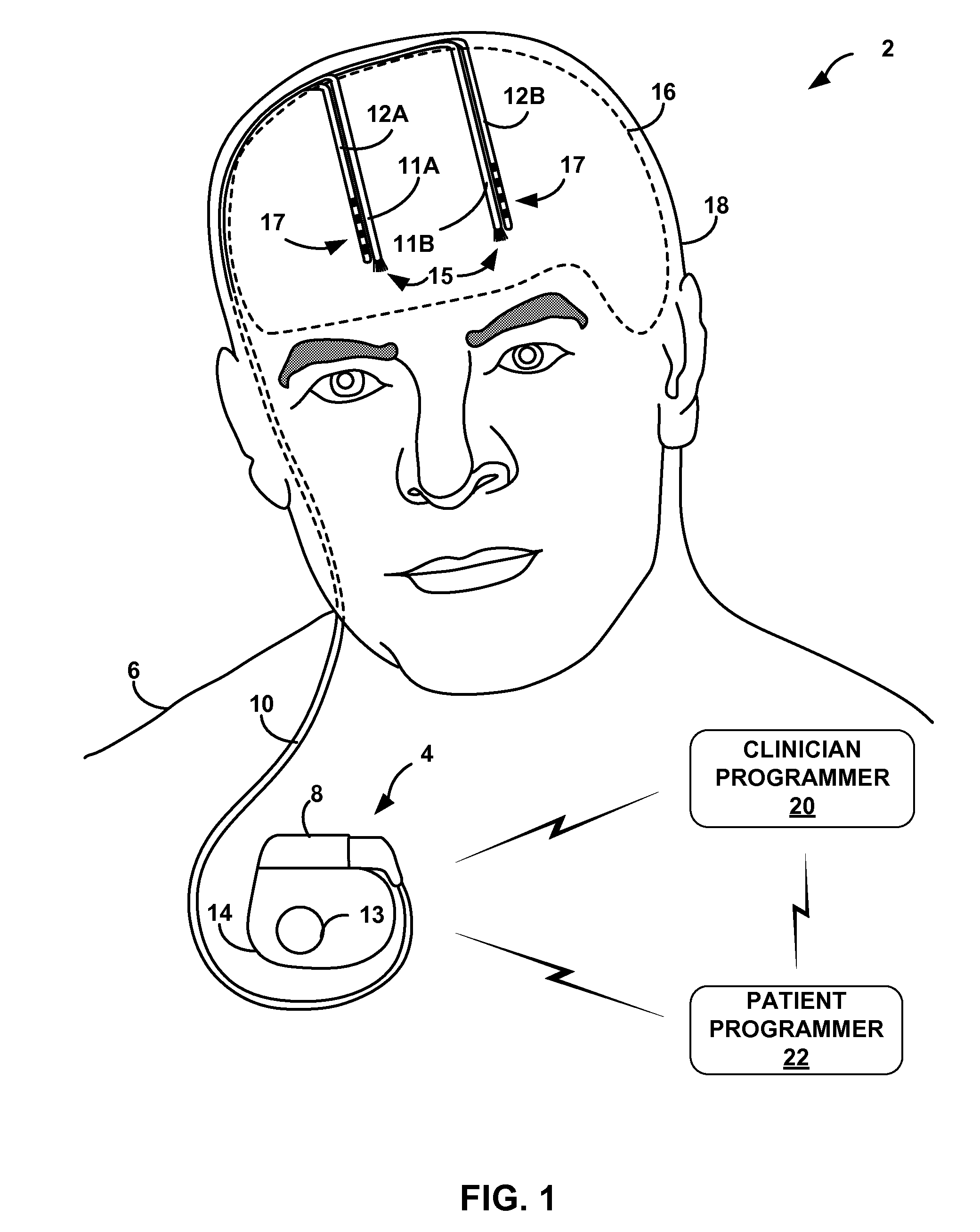Optical stimulation therapy
a technology of optical stimulation and electrodes, applied in the field of optical stimulation therapy, can solve the problems of overexcitation of cellular networks, lack of specificity of electrical difficulty in specific stimulation of neural tissue,
- Summary
- Abstract
- Description
- Claims
- Application Information
AI Technical Summary
Benefits of technology
Problems solved by technology
Method used
Image
Examples
Embodiment Construction
The disclosure, in some examples, describes optical stimulation techniques, such as optogenetic stimulation techniques. The techniques may be capable of exciting or inhibiting neural activity in target neuron populations. For optogenetic stimulation, the target neurons may be selectively transfected with genes that express opsins that are activated by light emitted into the target tissue. The light may be selected to activate an opsin to initiate neuronal spikes or to deactivate or inhibit an opsin to cease or prevent neuronal spikes. The light may also be selected to activate an opsin to suppress a neuronal spike. An optogenetic stimulation system may be configured as an implantable medical device that can deliver optical stimulation through implantable optical fibers or other light-delivery apparatus to a target tissue, such as to specific or highly specific neuron populations. The high degree of specificity provided by the optical stimulation may limit or prevent stimulation of n...
PUM
 Login to View More
Login to View More Abstract
Description
Claims
Application Information
 Login to View More
Login to View More - R&D
- Intellectual Property
- Life Sciences
- Materials
- Tech Scout
- Unparalleled Data Quality
- Higher Quality Content
- 60% Fewer Hallucinations
Browse by: Latest US Patents, China's latest patents, Technical Efficacy Thesaurus, Application Domain, Technology Topic, Popular Technical Reports.
© 2025 PatSnap. All rights reserved.Legal|Privacy policy|Modern Slavery Act Transparency Statement|Sitemap|About US| Contact US: help@patsnap.com



